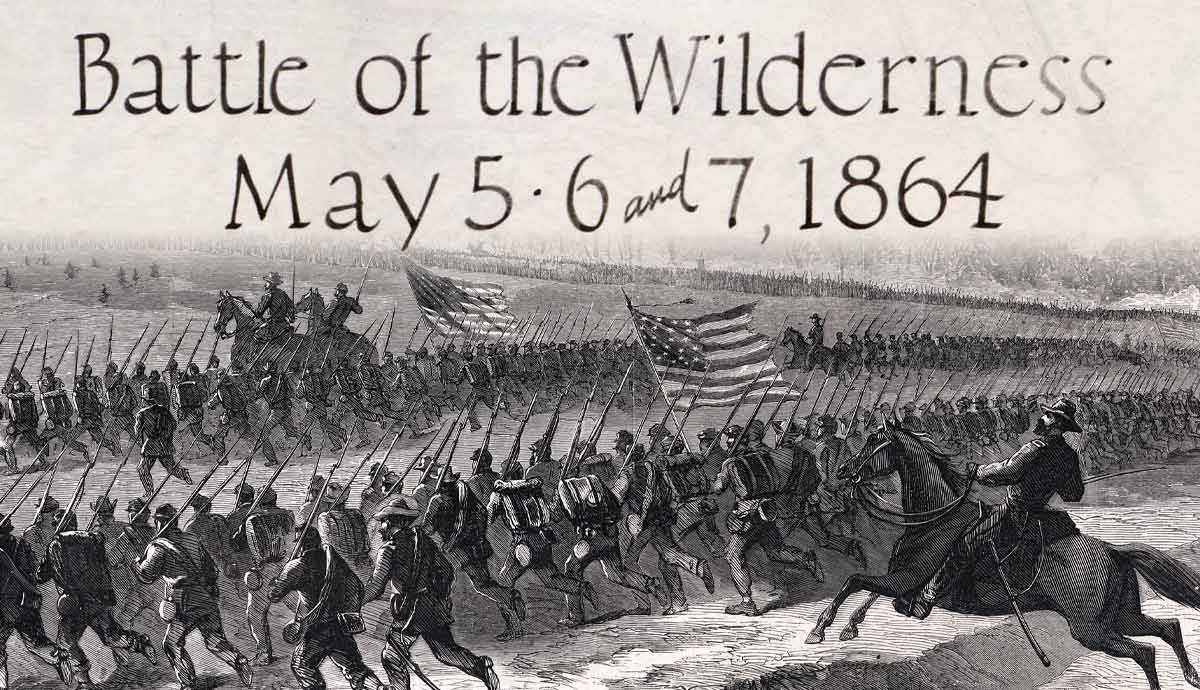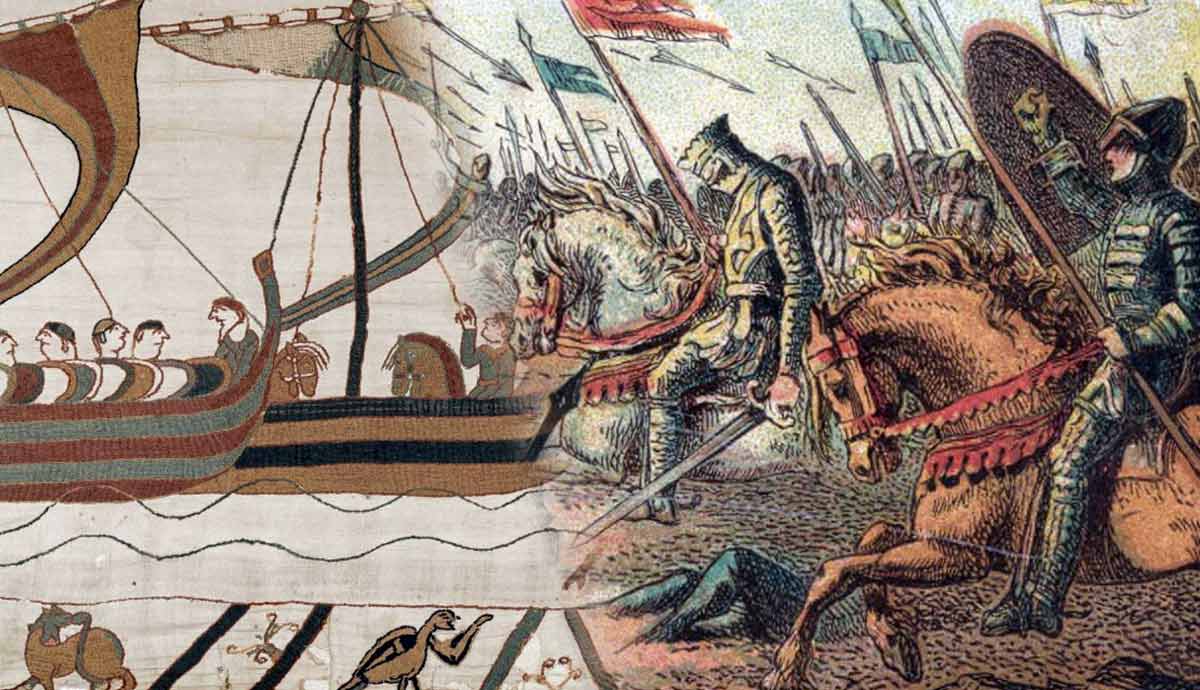
Many people think of the American Civil War as a battle of might and wits between two generals: the South’s Robert E. Lee and the North’s Ulysses S. Grant. Their actual struggle against each other did not begin until May 1864, after Grant was transferred to the Eastern Theater of the war and made general-in-chief of Union armies. The Battle of the Wilderness was the first of many Lee-vs-Grant battles.
Victory Claimed by Confederacy, but Likely Inconclusive

The Battle of the Wilderness was a massive engagement that opened the final, and perhaps most brutal, phase of the American Civil War. Ulysses S. Grant, the new general-in-chief of all Union armies, had a simple mission: attack Confederate general Robert E. Lee and Lee’s vaunted Army of Northern Virginia wherever it was. This army defended the Confederate capital of Richmond, Virginia and had defeated all previous Union attempts to seize the city. Defeating Lee’s Army of Northern Virginia would end the war.
Between May 5 and May 7, 1864, Grant’s massive Army of the Potomac clashed with the Army of Northern Virginia in territory that had seen multiple previous battles. The densely forested terrain in Virginia, known as the Wilderness, saw brutal fighting as both sides often stumbled into each other. Despite a strong start on May 5, Grant saw his offensive worn down by Lee’s skillful defense. Ultimately, Grant did not defeat Lee, giving the Confederates a chance to claim victory, but neither did Grant withdraw. Grant’s refusal to withdraw leaves many to call the battle inconclusive.
Timeline of the Battle of the Wilderness

By May 2, 1864, Confederate General Robert E. Lee knew that the Union’s Army of the Potomac was about to go on the offensive. He figured that another attack on Richmond was underway. This time, the Union forces were under the command of an aggressive new general-in-chief: Ulysses S. Grant. Lee quickly spread out his forces to be ready to intercept Grant no matter which way the Union general chose to march.
On May 4, the Army of the Potomac crossed into Virginia.
Just before dawn on May 5, the first Union cavalry regiments encountered Confederate infantry marching into position in the Wilderness region. Grant had tried to march through this thickly wooded territory to surprise Lee but had been caught.
Real fighting began later that morning, and an afternoon Union attack surprised Lee, who had wished to avoid a general engagement thus far.
By about 9:00 PM, the Union attack had been halted just short of a breakthrough.
Fierce fighting resumed that next morning, May 6, with another Union attack. Confederate general James Longstreet responded with a counterattack, and fighting raged throughout the day, most of it inconclusive.
By the morning of May 7, Grant decided to continue moving his army south rather than attack against strongly-constructed Confederate defenses. This would lead immediately to the Battle of Spotsylvania Court House.
What Caused the Battle of the Wilderness?

Ulysses S. Grant knew he needed to change the Union’s tactics for fighting the Confederacy. Previous attempts to take Richmond had been repulsed, but the Army of the Potomac’s withdrawal always gave the Confederates ample time to rest and build more defensive positions. Although a war of attrition would be painful, it would be more harmful to the South than to the North. Thus, Grant embarked on this new strategy in May 1864 and planned to continue until he had battered his way into Richmond. Grant thought, incorrectly, that taking his army through the woods would prevent its detection until he could fight the Confederates on open ground and use his artillery advantage.
For his part, Lee knew that he had to attack while the Army of the Potomac was still mired in the Wilderness. Outnumbered two-to-one, Lee risked a solid defeat if he allowed Grant to reach open ground and make use of his cannons. Hoping to use a similar strategy as at the Battle of Chancellorsville a year earlier, Lee wanted to send a few divisions forward to pin the Army of Potomac in place while other divisions struck suddenly from the sides. Unfortunately for Lee, the thick woods of the Wilderness would hinder his own troops as well during the fighting.
Why Was the Battle of the Wilderness Significant?

The battle was significant because it marked the opening of a war of attrition in Virginia. Grant would not give the enemy time to regroup, marking a tremendous shift in strategy from previous years. Time had been on the Confederacy’s side after previous engagements, with the South able to build more defenses. Although the South had limited manpower and could not sustain losses as easily as the North, the administration of Union President Abraham Lincoln faced political pressure to end the war as the months dragged on. A weary Northern public would not accept a “forever war” against the South.
Secondly, the Battle of the Wilderness was one of the largest battles of the war. Roughly 100,000 Union troops faced just over 60,000 Confederates, resulting in about 30,000 total casualties. After three years of combat, this was a painful addition to the already war-ravaged Union and Confederacy. Thus, Grant had incentive to push on and try to finish the war quickly—the voters in the North would not stand for these mounting casualties for long without clear signs of progress. Fortunately, Union victories further south, such as Sherman’s March to the Sea in Georgia, helped give Lincoln some political breathing room.
5 Facts About the Battle of the Wilderness

1. Casualties
Casualties during the Battle of the Wilderness totaled some 30,000 men, with roughly 17,000 from the Union and 13,000 from the Confederacy. These numbers have been disputed, with some arguing that Grant lost twice as many men as Lee. Regardless, even at a two-to-one ratio, the North could better handle the losses than the ailing South.
2. Commanders
Union forces were led by General Ulysses S. Grant, though Major General Gouverneur K. Warren directed most of the fighting on May 5. An engineer and topographer by training, Warren was an 1850 graduate of West Point. Warren’s topography skills helped the Union in the Battle of Gettysburg, for which Warren was promoted. Later, Warren was relieved of his command by General Philip Sheridan, and a feud lasted until an 1879 inquiry found that Sheridan’s action was unjustified.
Confederate forces were led by general Robert E. Lee. His most prominent field commander during the battle was lieutenant general James Longstreet, whose counterattack on May 6 helped save the Confederates from defeat. Longstreet was a West Pointer who served in the Mexican-American War and resigned from the US Army upon the outbreak of the Civil War. Unlike most colleagues, Longstreet openly questioned some of Lee’s decisions and later joined the Republican Party and worked with the Grant administration during post-war Reconstruction.
3. Number of Forces Involved

Under Grant and Lee, over 160,000 men fought in the Wilderness. About 100,000 of these were Union soldiers in the Army of the Potomac, and about 62,000 were Confederates in the Army of Northern Virginia. Due to the densely-forested terrain, it is difficult to determine how many men were engaged in fighting at any given time, or how many casualties truly occurred.
4. Visiting the Wilderness Region of Virginia Today
Today, visitors can see sites of the Battle of the Wilderness as part of the Fredericksburg & Spotsylvania Military Park in Virginia. They can engage in a driving tour with audio guidance, though some of it is on regularly used public roads. There is a specific outdoor battlefield exhibit for the Wilderness, which is accessible on a hiking trail. Many historic farms are part of the tour, representing locations where soldiers rested during the battle.
5. Trivia: One of Confederacy’s Best Generals Hit by Friendly Fire
With fewer soldiers and less industry than the North, the South relied heavily on skilled leadership to retain a rough combat parity. One of the Confederacy’s most prized generals was James Longstreet, who performed well despite the anguish of losing three children to scarlet fever in 1862. Longstreet often attacked and saved the day during battle, giving him a stellar reputation at the time despite outspoken disagreements with other generals, including Robert E. Lee. However, Longstreet’s reputation began to decline after the Battle of Gettysburg, where he openly disagreed with Pickett’s Charge.
On May 6, Longstreet was wounded by friendly fire during the Battle of the Wilderness in circumstances similar to those of fellow Confederate General “Stonewall” Jackson a year earlier. Longstreet survived, though his arm was paralyzed, and rejoined the war in October. By this time, Longstreet was on defensive duty and could do little to affect the outcome of the war. After the war, Longstreet helped the Grant administration with Reconstruction and received a pardon for his efforts in 1868.
Aftermath of the Wilderness: “The Grandest Act of Grant’s Life”

For the first time, the Army of the Potomac did not withdraw to the north after failing to defeat the Army of Northern Virginia. Instead, Grant continued to move south, keeping pressure on the Confederacy. Grant had promised President Lincoln that he would continue his offensive regardless of the outcome of the individual battle and held to that promise despite the high casualties. When fellow Union general William T. Sherman heard of Grant’s continued offensive, he called it the “grandest act” of Grant’s life.
Ultimately, Grant’s continued offensive in the Overland Campaign would be successful, resulting in the Siege of Petersburg and, later, the capture of Richmond. With no room to maneuver, Lee’s Army of Northern Virginia was worn down. Exhausted and out of supplies, Lee finally surrendered after the Battle of Appomattox Courthouse in April 1865, effectively ending the American Civil War. Grant would go on to win two terms as president of the United States.










